50 years on: Memories of the 1973 Arab-Israeli Conflict
A pilot writes how Pakistan Air Force fought in Syria
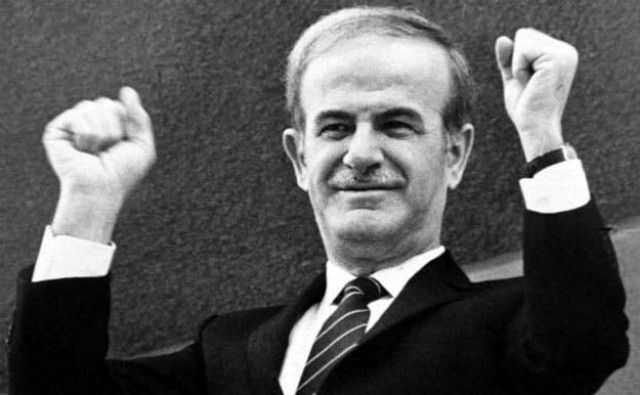
The whole process got expedited because of close relations between Zulfikar Ali Bhutto and Hafez-al-Assad (pictured above). PHOTO: REUTERS
Gearing up
It was October 1973, the month of Ramazan, and the weather was slowly becoming pleasant with early signs of winter. I was attending the Flying Instructor’s Course at PAF College Risalpur and flying the good old T-6G Harvard. The routine was dull till the unexpected news of a war breaking out between Arab countries and Israel came in and the discussions zeroed in to this topic at almost all gatherings. It was during one such after-dinner gathering that the performance of Arab and Israeli air forces came under focus and, as expected, the end analysis was a foregone conclusion. Somebody remarked about our inability to help the poor blighters because we were mere fighter pilots and did not figure anywhere in the scene.

My opinion was a bit different and I suggested that if anybody felt strongly enough, he could always volunteer in a personal capacity. One of my colleagues seconded me, looked me in the eye, and we both knew in a flash that the decision had been made. In no time we were off to the commandant’s residence to offer our services. It was nearly midnight when we reached him and the commandant’s first question was if we were coming from a bar, to which our answer was in the negative. He eyed us curiously and advised us to see him the next morning.
What happened from then onwards, at the higher command and government levels, is something I was not privy to. But we were off to Karachi immediately to be taken by a C-130 to Baghdad, a Caravelle to H-3 and by road to Damascus. On our way to Karachi, we were asked to fill out the necessary documents and papers. We were instantly granted ex-Pakistan leave for an indefinite period and were required to certify our next of kin, and that in case of a mishap during leave abroad, the PAF or the Government of Pakistan would not claim our bodies or even own us. Not a very morale-boosting start, but that is how it is. Minions like me and my colleagues do not matter at national level. I subsequently learnt that the whole process got expedited because of close relations between Zulfikar Ali Bhutto and Hafez-al-Assad.
Taking off
There were now 16 of us and we reached the Syrian air force operations centre in Damascus around 3:00am. Eight of us were packed off to Egypt immediately and the rest stayed in Syria, including me. We were taken to the only hotel, Semiramis, for our lodging, where we deposited our night clothes and tooth brushes because that is all that we had brought along, other than our flying gear. Damascus was fairly bombed-out, with no electricity and the hotel was as empty of guests as of attendants. This was no bother to us because we spent most of our time on the base, returning only to sleep and shower.
We reached Dumair Air Base, located about 30 kilometres (km) from Damascus, at around 8:00am. The base was littered with cluster bomblets exploding sporadically with either contact, tremor, sound or time-activated mechanisms. The sirens went off regularly. We were designated as No 67-A squadron and provided with necessary infrastructure. A senior Syrian colonel Shurbaji was assigned as our interpreter and guide, and what an excellent officer he proved to be.
The next immediate step was to give each of us a ride in the dual seat Mig-21 F13 and then fly solo to get the feel of the aircraft. It was the first and oldest model produced by Russia, but it felt great after the T-6G aircraft. By around noon, we were ready to take on the threat. Roughly speaking, it had taken around 36 hours from the time we volunteered till the time we were strapped in a cockpit and ready to go. Mighty fast that was, and it could not have been any quicker.
Whereas my seven companions had previously served in Syria and were familiar with what went on, I had not, and had to do some quick learning. For instance, the Syrian air force official, radio and radar language was Arabic, and my Arabic was limited to reciting Surah-e-Fateha. The flying area was all lava-covered terrain with few features and was dominated by wild wolves requiring us to fly armed at all times. The writing in the aircraft cockpit was all in Russian. There were no English manuals to read through and understand the aircraft systems. Normal briefs and debriefs were all held in Arabic. Since I didn’t have a choice, I was speaking fluent Arabic within one week but, of course, it was limited to flying activity only.
The eight pilots comprising our formation were Arif Manzoor (leader), Aftab Iqbal, Nasir Mahmood Butt, Safdar Mahmood, Suleman Nabi, Javed Latif, Hameed Malik and Sattar Alvi, and we were assisted by a Pakistani radar controller Saleem Metla. Each of us in his own mind thought that he was the cat’s whiskers and I personally believe that to have been true. One of the finest professional lot, if there was one. That probably was a critical factor in seeing us through an extremely tough and testing time ahead.
On the enemy’s side, the Israeli Air Force fielded F-4 Phantoms and Mirage III aircraft against us. The Israelis invariably kept a standing patrol of 32 aircraft over Lake Tabariyyah or Dead Sea to counter surprises. There was the listening and radio plus radar jamming post on top of Mount Hermon (Jabal-Al-Shaykh) operating round the clock. Our radio was monitored by the enemy and on occasion Punjabi and Urdu invectives were hurled at us, clearly indicating the presence of Indians at the Israeli post. We had to observe a lot of radio silence and sort of invented a mixed language understood only by the eight of us. It comprised words from English, Urdu, Pashto, Russian, Seraiki, Arabic and Turkish. At any given time when the air operations were ongoing, the sky would be filled with Israeli aircraft with a ratio of say 10:1- but this is my guess only. The radio and radar were always jammed prior to an anticipated engagement.

Air Cdre (r) Abdus Sattar Alvi
On our side: We were always the first to scramble whenever a threat materialised. We were flying Mig-21F13, which had been almost phased out in the world’s air forces. The gun on board was ancient and had probably never been harmonised. The missile was K-13, the first Russian design and a copy of Sidewinder. The aircraft had barely enough fuel to last a maximum of 30 minutes in air without combat, which was a severe handicap. None of us was familiar with the terrain because we mostly flew over Lebanon, north of Israel and the Mediterranean. We had absolutely no intelligence information on the Israeli air force operations and tactics. The Syrians could not tell us anything constructive to assist us in combat.
Expected turbulence
In short, we were heavily outnumbered, flying obsolete aircraft with ancient weapons, electronically jammed and always starting from a position of disadvantage. Sometimes we wondered if it was the wisest thing to have volunteered. In fact, none of us had bothered to weigh the odds, and had arrived at the scene far more confident of ourselves than we should have been. This confidence was soon to disappear and be replaced by a reality assessment and readjustment of our combat tactics and priorities. We discussed all these issues among ourselves looking at them from all angles and concluded just one thing: The Israeli plans and tactics appeared to indicate that somehow or the other, they wanted to shoot down a Pakistani pilot in air combat. And that was the one and only thing that we were not going to let them do. We fully understood that nobody would give a toss about the odds, but getting shot by an Israeli would convey four things: It would be a huge embarrassment for the pilot if he survived, it would give the impression that we were poor professionals, it would be an embarrassment for the PAF, and a stigma for Pakistan.This in turn would reinforce the myth of Israeli Air Force invincibility.
We therefore took a firm decision: Under no circumstances would we permit the Israelis to shoot any of us in air combat. However, if we got an opportunity to return the favour, so much the better. For almost seven months, till Syria declared a cease fire, we were in cockpits every day from half an hour before sunrise till half an hour after sunset. A very surprising and incredible thing was that throughout this period, none of us fell sick for a single day and the aircraft were always serviceable. There was never an abort.
Having said that, I must also highlight a very critical point, even though it is somewhat unflattering and embarrassing to admit. With the way the odds were stacked against us, we were all terribly scared. We not only had to live with this fear, but also had to endure it and overcome it, and not show it if we were to do anything worthwhile. We had hot scrambles every now and then and we all got airborne every time looking forward to a deadly clash. The Israelis were smart and would not engage unless there existed a very high probability of kill with no threat to them.
We therefore had a lot of near engagements which resulted in instant disengagements. But we knew that the circle was being tightened around us and any day could be a D-Day to the advantage of Israelis. This situation was nerve-wracking and becoming unbearable every day. We discussed it often but no workable solution emerged. Finally, we decided to take the offensive route. We made an aggressive plan to trap the Israelis with the help of some Syrian aircraft as decoys, and then follow up with our own engagement plan. The Syrian Air Force Headquarters approved of the plan initially, but decided against it after three days because in the Syrians it was too risky for the Pakistani pilots. We went back to square one.
May day, may day
But then it happened on the afternoon of April 26, 1974. I was flying as Shahbaz eight, the last man bringing up the rear in the formation, usually to be the first target in combat. We followed the controller’s instructions flying at 20,000 feet. About 5km north of the Israeli border, we turned east towards our base, intending to return because of low fuel. This is where the controller called about their planes closing in on us.

The Israeli Air Force fielded F-4 Phantoms ((such as that pictured above) and Mirage III aircraft against them. PHOTO: FRANK NOORT
They were closing in rapidly and there was no choice, but to turn and engage. No sooner had the leader ordered the turn, that the radio and radar signals were jammed, emitting unbearably shrilly noises. Just as I was turning to position myself during the turn, I got a glint of metal from behind and well below me. I simply could not ignore it and turned back to find two Mirages zooming up towards me from the valley beneath. By this time, my own formation had turned 180 degrees away flying at Mach 1.2 with no radio contact. ‘This was it’, I knew instinctively, and I was alone: Two Mirages against a single Mig-21. Instantly the fighter pilot’s training kicked in and all other thoughts left my mind. I proceeded to do what I had been trained to do.
A cardinal rule of air combat is knowing and using the limitations and strengths of your own and the enemy’s aircraft. A Mirage is good at high speeds and poor at slow speed combat. The Mirage leader made his high speed pass at me and as I forced him to overshoot he pulled up high above me. His wingman followed in the attack and I did the same with him; followed by a violent reversal and making the aircraft stand on its tail. The speed dropped to zero. The wingman should have followed his leader.
To my surprise he didn’t, and reversed getting into scissors with me at low speeds. That was suicidal and a Mirage should never do that against a Mig-21. But then, the game plan probably was for the wingman to keep me engaged while the leader turned around to sandwich and then shoot me. It was a good plan, but not easy to execute. The only difficulty in this plan was that the second Mirage had to keep me engaged long enough without becoming vulnerable himself. This is where things began to go wrong for the wingman because his leader took about 10 seconds longer than what was required.
The ‘Miraj’ effect
The wingman couldn’t just hang on with me and there was a star of David in my aiming sight after the second reversal. Seeing his dilemma and desperation to escape, the wingman attempted an exit with a steep high-speed dive. That in fact made my job easier and quicker. As soon as the distance increased and I heard the deep growl of the K-13, I fired. The missile takes one second to leave the rails and that was the longest second of my life. A second later there was a ball of fire where the wingman had been and I turned to face the leader charging towards me. We crossed but he had made a beeline for his home and thank God for that. I had only vapours remaining and no fuel. I hit the deck with supersonic speed.
Capt Lutz who was flying as the unfortunate wingman, was rescued by a helicopter and brought to the military hospital. He succumbed to his injuries later in the hospital before I could have a tete-a-tete with him. I have his flying coverall with me, presented to me as a war trophy by the Syrian air force commander-in-chief. I was awarded Wisam-e Faris and Wisam-e-Shujaat by the Syrian government, which are equivalent to Pakistani Hilal-e-Jurat and Sitara-e-Jurat. These medals carried a lot of money with them, but for whatever reason, I donated everything back to the Syrian National Defence Fund and accepted only the medals. I was also awarded Sitara-e-Jurat by the Government of Pakistan. Let me also echo what somebody else has already suggested somewhere: There is a peculiar gratification in receiving compliments from one’s squadron mates for a victory in the air. It is worth more to a fighter pilot than applause from the whole world.

I have always maintained that few air combats are won by the expertise of the pilot; most are lost by the other pilot due to bad handling, bad tactics or, simply, mistakes. A fighter pilot is always aiming to shoot down the adversary’s aircraft. There is never a thought of shooting the man in the cockpit. A good weapon system boosts the pilot morale to no end and there is no substitute for training. The fighter pilot then needs only two things, patience and overcoming the fear of odds. I used to be quick-tempered, but I learnt to be patient from two things. First was my extended dealing with the Chinese and the second was playing golf. You don’t get anywhere by cursing either of them. And to escape fear, you have to go through it, not around it. When you do that, you will find that fear is also an illusion.
Published in The Express Tribune, March 20th, 2015.
Like Life & Style on Facebook, follow @ETLifeandStyle on Twitter for the latest in fashion, gossip and entertainment.

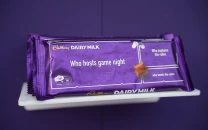
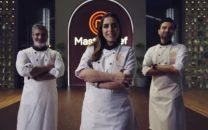
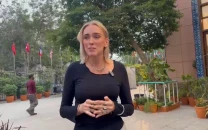
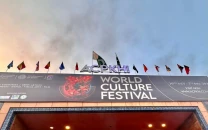

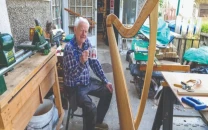

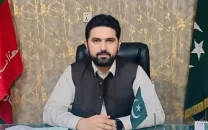
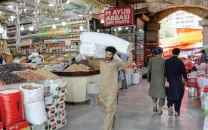


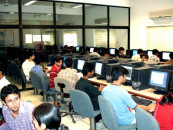






COMMENTS
Comments are moderated and generally will be posted if they are on-topic and not abusive.
For more information, please see our Comments FAQ